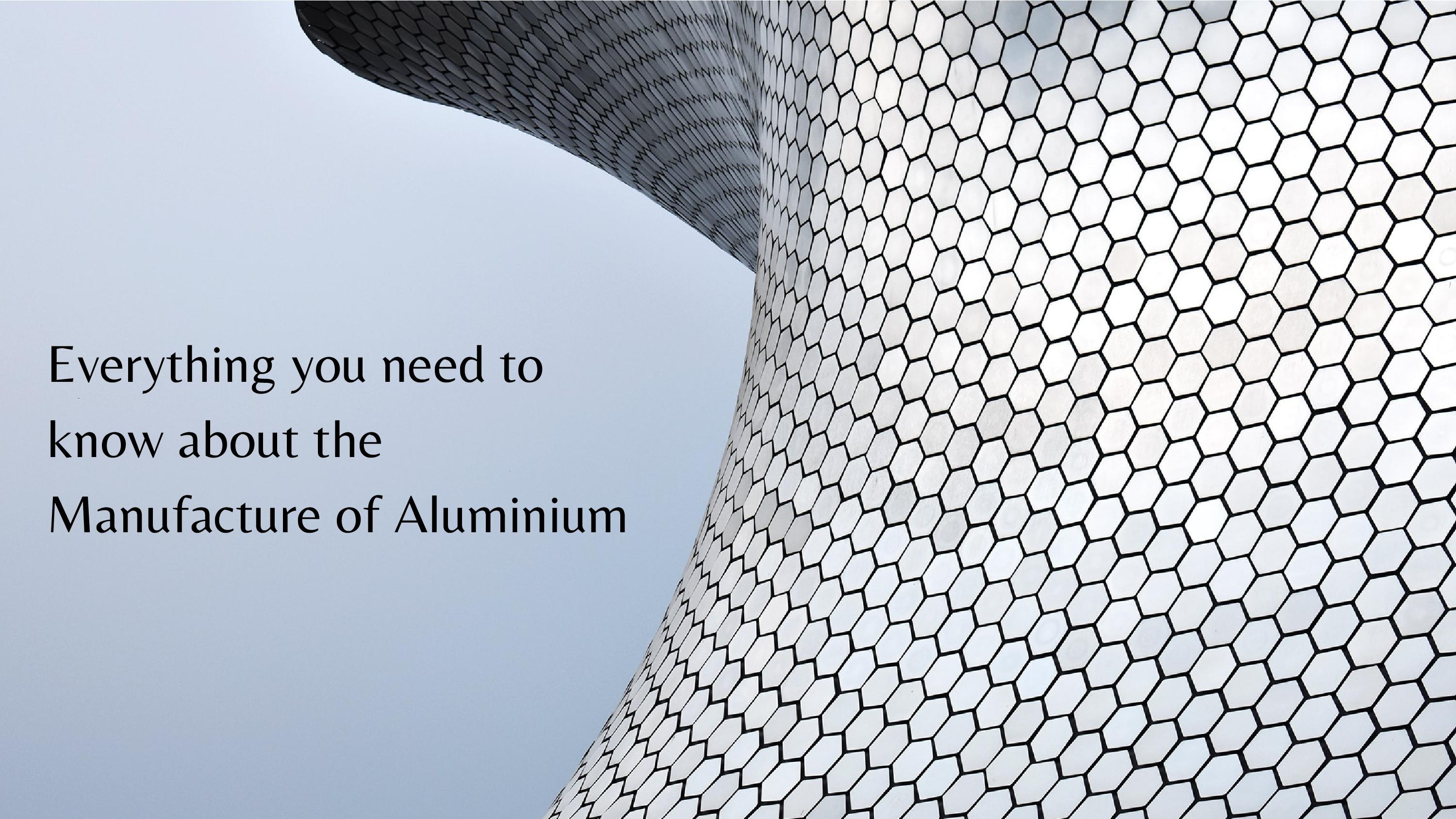Everything You Need to Know About the Manufacture of Aluminium
With a broad spectrum of applications, aluminium has proved to be a versatile material. But from where exactly does aluminium actually originate? And how is aluminium manufactured? Read more about the aluminium sources and the aluminium manufacturing process and how this material is formed into a finished product in this blog.

The aluminium production process begins with:
The mining of Bauxite: Aluminium is dependent on bauxite, a mineral in the earth’s crust that is available in sufficient quantity. It is the primary raw material in aluminium production. It is a clay mineral found in areas such as Australia and the West Indies that are tropical and sub-tropical.
Fact: Bauxite is mostly mined just a few metres below the surface of the earth. For 1 tonne of aluminium, approximately 4-5 tonnes of bauxite is required.
Bauxite grinding: The bauxite mineral is shipped to refineries where the clay is washed away and a more consistent material is formed by the bauxite going through a grinder.
Bauxite crushing: The ground metal is pumped with a caustic soda or sodium hydroxide solution into huge pressure tanks and steam heat is applied. To create a solution of sodium aluminate (often known as slurry), the caustic soda combines with the aluminium compounds in the bauxite material. The excessive residues of iron, silicon and titanium (often known as red mud) eventually fall to the bottom of the tank and are discarded.
Settling: In lower pressure settling tanks, the sodium aluminate solution is then passed through. The solution is aimed downward through a series of filers at the top of the tanks to eliminate excess red mud. To extract any solids in the solution, the remaining alumina is then passed through enormous “leaves” or fabric filters.
Precipitation: The sodium aluminate solution is then cooled and pumped into massive precipitators. To begin the precipitation process, aluminium hydroxide seed crystals are added to the solution and large aluminium crystals are formed at this stage.
Calcination: The crystals are then heated to a high temperature of over 960° C in rotary kilns. The last impurities are removed and a white powder is formed, known as alumina or aluminium oxide. Through the smelting or Hall-Héroult process, the refined alumina is converted into aluminium.
Smelting process: With 950° C molten cryolite, the alumina is poured into a reduction cell. In order to sever the bond between aluminium and oxygen, 400kA electric currents are passed through the mixture. 99.8 percent pure aluminium is the outcome.
Fact: It takes a great deal of energy to produce the power to turn alumina into pure aluminium. For this purpose, alumina is manufactured at locations where it is possible to simply and relatively cleanly produce the energy needed. Often, the primary smelters use hydropower stations at these sites.
Pure aluminium has very few purposes, and in order to improve its strength, the material has to be alloyed. Popular alloys include the 6000 series that is manufactured to build a corrosion-resistant, solid and machinable material with magnesium silicide. Three methods are then used to treat the liquid aluminium:
Aluminium Extrusion: The ingot of the aluminium alloy is heated to 350-500 ° C, and forced through the die by a hydraulic press. To alleviate some tension, the material is then cooled and stretched.
Aluminium Rolling: The aluminium alloy is carved up to 9 metres in length into large rectangular beams. It is then possible to roll the malleable aluminium beams into thin sheets. This is used for beverage cans and foil that can be rolled up to thin sizes of 0.006 mm.
Foundry alloys: Done by cold-chamber casting, the metal is heated up in a furnace and a hydraulic piston is then fed into the die. The die will then shape the aluminium to its required form. This method is used in many fields, especially in the aerospace and electronics industries.
In conclusion, the overall aluminium extraction and aluminium production process is an extremely evolved, yet interesting process. Right from bauxite extraction, to the alumina conversion and eventually completing the whole process, the end product is always the same – pure aluminium, ready for processing by post-processing firms.

